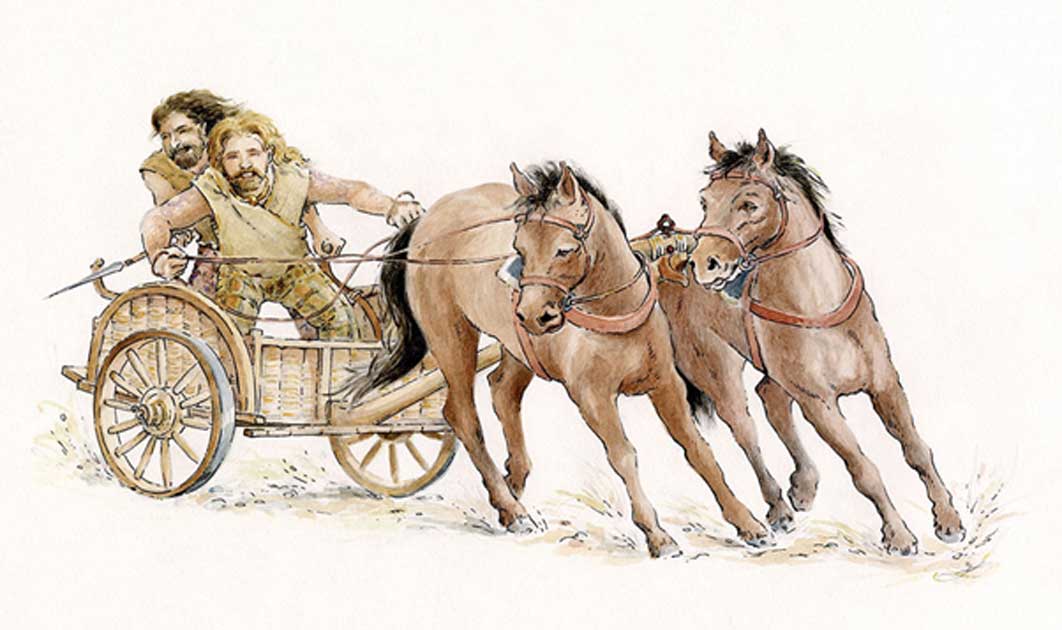
The people of Wales are fiercely proud of who they are, where they come from, and above all, their ability to remain a distinct people in the face of conquest. One such tribe in the south of Wales embodied this determination for the preservation of their people. The Silures tribe fought off the Roman conquerors for more than 25 years, and that same warrior blood may still be running in the veins of some Welsh people.
Who Were the Silures?
The Silures were a tribe, or tribal confederation, that occupied what is now Eastern Wales. The Roman Historian and Senator Tacitus wrote of the Silures tribe. He described them as having curly hair and dark skin. As such, he believed that they had crossed over from Spain into Wales. This description is echoed by Jordanes in his Origins and Deeds of the Goths , where he says, “The Silures have swarthy features and are usually born with curly black hair […]. They are like the Gauls or the Spaniards.”
The Latin word Silures comes from the common Celtic root Silo- meaning seed of offspring. Therefore, the name Silures might mean offspring of kin. This could be a reference to the belief that the tribe all descended from one original ancestor, as some believe, or that their original tribal name was silo-riks – ‘rich-in-grain’.
Silures Resistance
Rome first attacked the Silures tribe in 48 AD as part of a campaign against all of the tribes of Wales. The Silures tribe, and a neighboring Northern tribe, the Ordovices, were led in their resistance by a man named Caratacus. Caratacus had fled what is now England when it was being conquered by the Romans. This fearless leader with a hatred for the Romans was defeated in 51 AD by a Roman general names Ostorius.
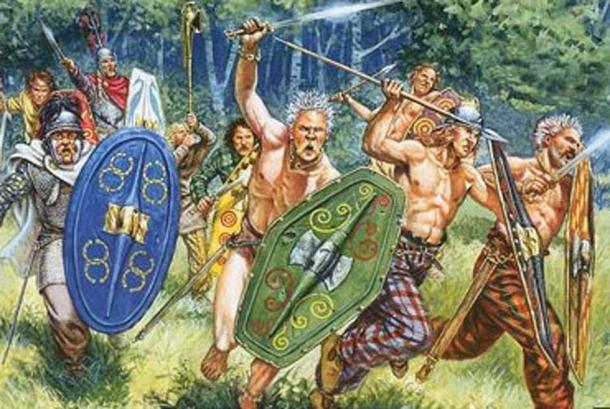
Representative image of Silures warriors. ( Silurian Games )
The defeat of their leader did not break the Silures’ spirit. For years to come, the Silures tribe waged guerrilla warfare very effectively against Ostorius and the Romans. They were so effective that Ostorius proclaimed that the Silures tribe should either be exterminated or transplanted. But this threat only hardened the Silures warriors. The tribe attacked a large group of Romans who had been building forts in Wales, to considerable loss. However, they did manage to capture some Roman hostages and gave them to neighboring tribes to bind them together against the Romans and encourage resistance.
Eventually, in 75 AD, the Silures were “subdued” according to Roman sources. It remains unclear whether the tribe was defeated militarily or came to a peace agreement.
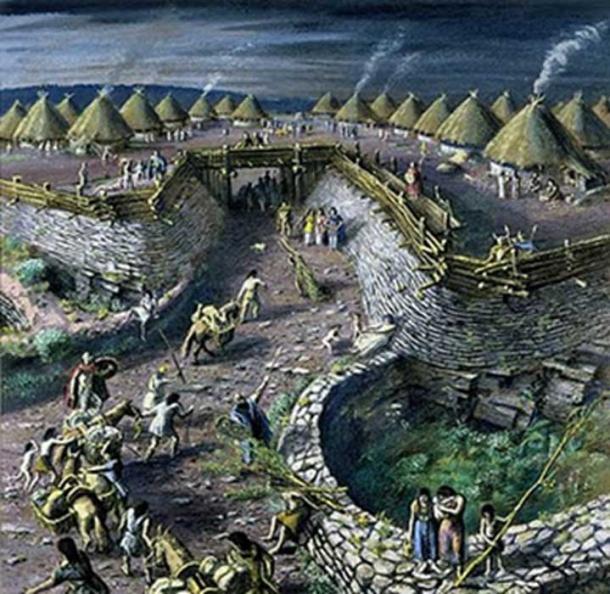
The main entrance to the Iron Age hillfort at Llanmelin, Monmouthshire by Alan Sorrell (1940). ( CTS)
Silures Warriors: Savages or Civilized?
Dr. Ray Howell from the University of Wales explains that the Silures were not simply a warrior society. Rather they were a sophisticated people that traded widely and had horse-drawn vehicles. He explains that, for the Silures tribe, the color that most represented war was red. Therefore, all war chariots and armor was either painted or decorated with red enamel. Dr. Howell also believes that the Silures tribe spoke an early version of the Welsh dialect that lived on after their defeat and through Roman occupation.
Venta Silurum
Venta Silurum means “Market town of the Silures”. It was established as an administrative center by the Romans for the Silures tribe after they were defeated in 75 AD. The town was located between modern-day Caerleon in Wales and Gloucester in England, and originally only had a forum and a basilica. However, as time went on more was built, such as a marketplace, public baths, shops, and a blacksmith. These features as well as the remains of farms and houses have been excavated in modern times.
After the Romans withdrew from Britain in the late 4th century AD, the town lacked any substantial defenses. Soon after, large stone walls were built to surround the town. After some archaeological excavations of the site, it was clear that large sections of these walls are still intact. The walls have been described as “easily the most impressive town defence to survive from Roman Britain, and in its freedom from later rebuilding one of the most perfectly preserved in Northern Europe.”
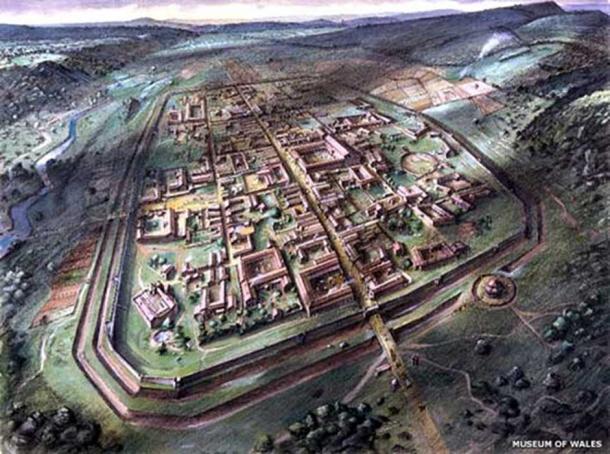
The Silure civitus ‘Venta Silurum’ (Caerwent) at its full extent. ( Museum of Wales )
In 1881, archaeological excavations uncovered an intricate colorful mosaic floor that depicted a variety of fish. A dig in 2008 found a row of narrow shops and a villa with painted walls, frescoes of Roman art, and more mosaic floors. In the buildings, Roman artifacts such as coins, ceramics, and human/animal remains were found. Modern buildings have been built on half of the site, but many of the original Roman buildings are still visible, including the foundations of a 4th-century temple.
- Caractacus: The Powerful Celtic King Who Defied Rome
- Bronze Age gold rings of a high-status person found in Wales
- Following ‘Sarn Helen’, an Ancient Roman Network of Roads, Across Wales
The town of Venta Silurum had continued occupation after the Romans left. In the 5th century, the territory of the Silures tribe became the Welsh Kingdoms of Gwent, Brycheiniog, and Gwynllwg. There is some evidence of cultural continuity through the Roman period, from the Silures tribe to the Kingdom of Gwent, in which some leaders were named ‘ Caradoc’ to remember and honor the hero Caratacus.
Silures DNA
There are two perspectives when considering the Silures DNA: take Tacitus at face value and believe that the Silures tribe were descended from Spaniards, or, as some argue, Africans. Or to believe that their “swarthy” features merely meant they were dirty, and they were in fact purely Celtic. There has been no concrete evidence to prove or disprove either theory. All that we know to date about the Silures tribe is that they were fierce warriors and a proud part of Welsh history.
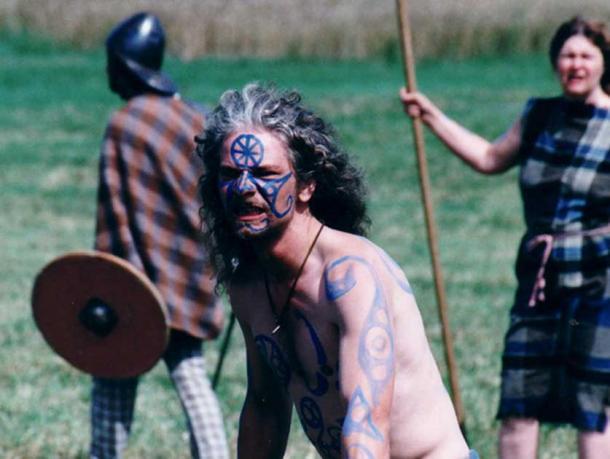
Modern re-enactment of the Silures at War. (CTS)




